U.S. Coast Guard: 225 Years of Defense Readiness
2015 marks the 225th birthday of the United States Coast Guard.
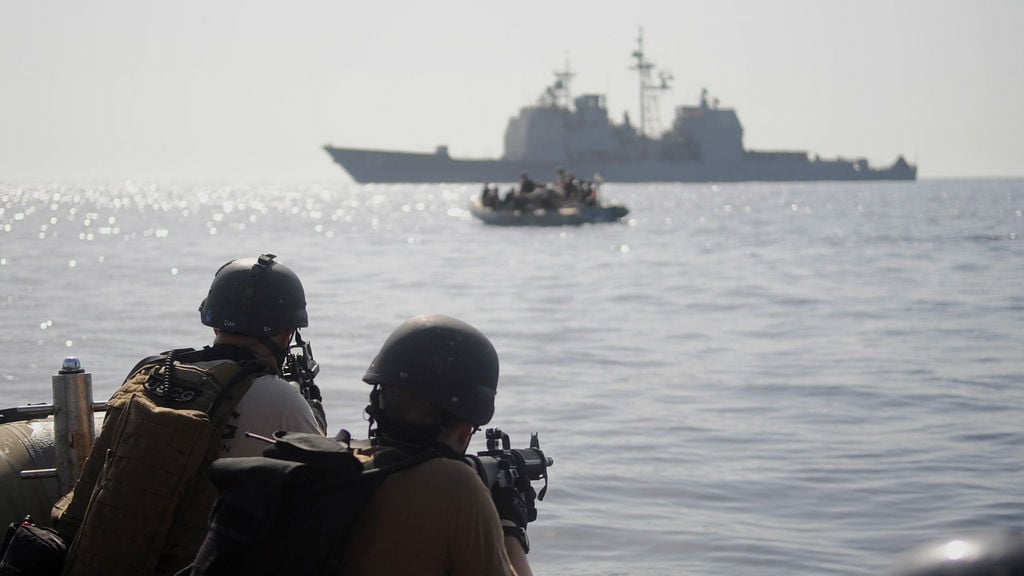
by Christopher Havern
For 225 years, the Coast Guard has served as the nation’s lead Federal maritime law enforcement agency, protecting our shores each and every day. The Coast Guard also serves as one of the nation’s five armed forces, assisting in the defense of our nation during times of war.
The U.S. Coast Guard and its predecessor, the Revenue Cutter Service have participated in or supported every major American military conflict since the Constitution was ratified. Soon after the legislation was passed to build the first 10 revenue cutters, cutters were called into military action. As these Revenue Cutters continued to engage in military operations, their role became solidified.
Various legislative acts throughout the late 1790’s formalized their role, giving the president to mobilize the fleet of cutters to assist in the defense of the coastal regions. Most notably, legislation directed that the cutters shall, at the discretion of the president, “cooperate with the Navy of the United States, during which time they shall be under the direction of the Secretary of the Navy…”
Quasi-War with France (1797-1801)
During this conflict, eight cutters operated along the southern coast and in the West Indies. Eighteen of the 22 prizes captured by the United States between 1798 and 1799 were taken by cutters unaided, and revenue cutters also assisted in the capture of two more. The cutter Pickering alone made two cruises to the West Indies and captured 10 prizes.
War of 1812 (1812-1815)
The revenue cutters distinguished themselves during the War of 1812. The first capture of a British vessel was by a revenue cutter. One of the most hotly contested engagements in the war was between the cutter Surveyor and the British frigate Narcissus. Although Surveyor was eventually captured, the British commander commended her commander and crew. The cutter Vigilant captured the British privateer Dart. Vigilant pursued the privateer and caught it coming up alongside. An armed party boarded Dart and took her as a prize.
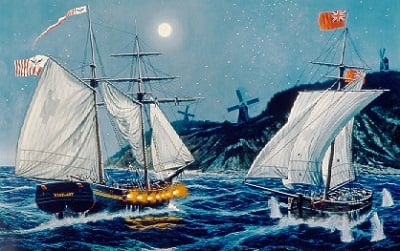
Seminole Wars (1836-1842)
Eight revenue cutters supported U.S. Army and U.S. Navy operations against the Seminoles, who refused to submit to U.S. authority. Duties performed by these vessels along the entire coast of Florida included attacks on war parties, breaking up rendezvous points, picking up survivors of Seminole raids, carrying dispatches, transporting troops, blocking rivers to the passage of Seminole forces, and the dispatch of landing parties and artillery for the defense of settlements.
Mexican War (1846-48)
Revenue cutters were integral in assisting the Navy in the conduct of its principal missions, conducting amphibious landings and blockading the coasts. Five shallow-draft cutters engaged in amphibious operations and distinguished themselves particularly at Alvarado and Tabasco.
Civil War (1861-65)
The first naval shot of the Civil War was fired by Cutter Harriet Lane when it challenged the steamer Nashville with a shot across its bow in Charleston harbor. Harriet Lane also participated in the capture of Hatteras Inlet. The principal wartime duties of Union cutters were patrolling for commerce raiders and providing fire support for troops ashore.
Spanish-American War (1898)
The Revenue Cutter Service rendered conspicuous service during the war. Revenue Cutter McCulloch, was part of Admiral Dewey’s force at the Battle of Manila Bay and was later employed as his dispatch boat. Eight cutters were also constituents of Admiral Sampson’s fleet blockading Havana. In the action off Cardenas on May 11, 1898, Revenue Cutter Hudson sustained the fight against Spanish gunboats and shore batteries side by side with USS Winslow. When half of Winslow’s crew had been killed, Hudson rescued the torpedo boat from certain destruction.
World War I (1917-1918)
With the declaration of war against Germany on April 6, 1917, a coded dispatch transferred the Coast Guard to the operational control of the Navy Department. During World War I, the Coast Guard continued to enforce regulations governing anchorages and vessel movements in American harbors.
The Espionage Act of June 1917 gave the Coast Guard the authority to protect shipping from sabotage and safeguard waterfront property. The term “captain of the port” was first used in New York and this officer was charged with supervising the safe loading of explosives. Similar posts were established in other U.S. ports.
In August and September 1917, six Coast Guard cutters left the United States to join U.S. naval forces in European waters. They constituted Squadron 2 of Division 6 of the patrol forces of the Atlantic Fleet and were based at Gibraltar. They escorted hundreds of vessels between Gibraltar and the British Isles, as well as escort and patrol duty in the Mediterranean. Coast Guard officers also held other important commands during World War I including vessels, air stations, and training installations. Coast Guard Cutter Tampa distinguished itself during the war.
On the evening of September 26, 1918, however, Tampa was sunk by UB-91 which reported sinking an American warship fitting Tampa’s description. One hundred-fifteen, 111 of whom were Coast Guard personnel, perished. This was the largest loss of life incurred in combat by any U.S. naval unit during the war. More than 8,000 Coast Guard men served the nation during World War I.
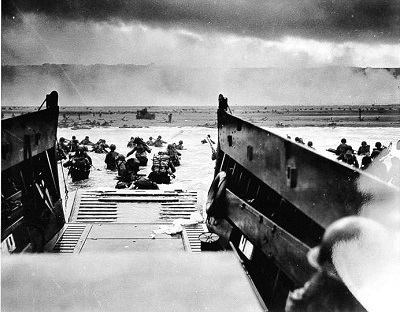
World War II
Following the outbreak of war in Europe in 1939, the Coast Guard carried out extensive patrols to enforce American neutrality. With Greenland’s incorporation into hemispheric defense on April 9, 1941, the Coast Guard became the primary service responsible for patrolling that area. On September 12, Coast Guard Cutter Northland seized the Norwegian trawler Buskoe, marking the first captured vessel of World War II. On November 1, 1941 the Coast Guard was ordered to operate as part of the Navy.
With the December 7, 1941, Japanese attack on Pearl Harbor, the U.S. was officially at war and the Coast Guard played a vital role in the ultimate victory. Coast Guard patrolled the waters off Greenland and Coast Guard-manned warships served as convoy escorts, sank enemy submarines, and helped win the Battle of the Atlantic.
Coast Guard personnel manned amphibious ships landing U.S. Army and U.S. Marine forces in European and Pacific theaters. Coast Guard coastal picket vessels patrolled the coasts while armed Coast Guardsmen patrolled beaches and docks. More than 230,000 men and 10,000 women served in the Coast Guard during World War II. The Coast Guard manned 351 naval ships and craft and 288 Army vessels in addition to 802 cutters.
Almost 2,000 Coast Guardsmen were decorated, including Douglas A. Munro, who received the Medal of Honor for his heroic actions as Guadalcanal. With the war won, the Coast Guard returned to the Treasury Department on January 1, 1946.
Korean Conflict (1950-1953)
During the Korean War, the Coast Guard performed a variety of tasks. These included establishing air detachments throughout the Pacific to conduct search and rescue, re-commissioning Navy destroyer escorts to augment the fleet, and establishing additional weather stations in the Pacific for communications and meteorological services.
Domestically, the Coast Guard also ensured port security and proper ammunition handling. A team of Coast Guard cadre also helped establish the Korean Coast Guard, which has since evolved into that country’s Navy.
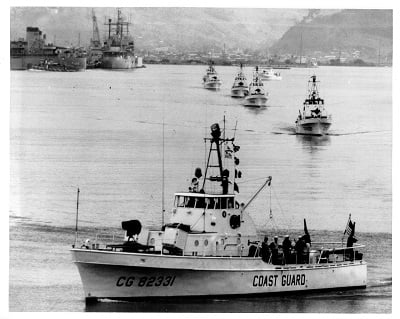
War in Vietnam
The Coast Guard was asked by the Navy to provide shallow water craft and crew needed for inshore, interdiction operations. The Coast Guard sent 26 82-foot cutters to Vietnam, forming Coast Guard Squadron One. The cutters spent some 70 percent of their time underway inspecting vessels and craft for contraband, intercepting and destroying enemy craft and providing fire support for friendly forces.
While the 82-foot cutters patrolled inshore, larger cutters helped form a deepwater barrier against infiltration. For this task, the Coast Guard established Squadron Three. It consisted of high endurance cutters on 10-month deployments. Thirty high endurance cutters served on this duty between 1967 and 1971.
The Coast Guard also assisted the Army with Explosives Loading Detachments while the Coast Guard Port Security and Waterways Detail traveled throughout Vietnam inspecting ports and harbors for security and safe storage of hazardous materials. The Coast Guard also set up and operated a long range navigation system in Southeast Asia in order to assist the U. S. Air Force with precision navigation.
Coast Guard buoy tenders in the Pacific also made periodic trips to Vietnam installing and maintaining buoys and a Coast Guard Aids to Navigation Detail was set up in Saigon.
With more than 300 merchant ships engaged in the sealift of materiel to Vietnam, the Coast Guard Merchant Marine Detail was called upon to resolve merchant seaman problems and ensure that these ships sailed on schedule. Coast Guard pilots flew combat search and rescue with the Air Force under an inter-service exchange program. In the end, though little known, some 8,000 Coast Guardsmen served in Vietnam.
Post-Vietnam
On March 7, 1984, in an effort to define the national defense role for the Coast Guard, the Secretaries of the Navy and Transportation signed a memorandum of agreement establishing Maritime Defense Zones, MDZs, on the Atlantic and Pacific Coasts. On August 4, 1986, Commandant Paul Yost issued a policy which stated that the MDZ Commands and the Coast Guard have inter-related roles in the coastal defense of the United States.
Desert Storm/Desert Shield
With the Iraqi invasion of Kuwait on August 1, 1990, the Coast Guard was again called to perform military duties on a large scale. On August 17, 1990, at the request of the Joint Chiefs of Staff, the Secretary of Transportation and the Commandant of the Coast Guard committed Coast Guard law enforcement boarding teams to Operation Desert Shield.
A total of 10 four-person teams served in theatre to support the enforcement of U.N. sanctions by the Maritime Interdiction Forces. President George H. W. Bush, on August 22, 1990, called up selected reserve members to active duty in support of Operation Desert Shield.
Three port security units, consisting of 550 Coast Guard reservists, were ordered to the Persian Gulf. A total of 950 Coast Guard reservists were called to active duty. Other reservist duties included supervising vessel inspection and loading hazardous military cargoes.
On September 15, 1990, the Secretary of Transportation and the commandant committed the first-ever deployment of a Coast Guard Reserve port security unit overseas, Port Security Unit 303. On April 21, 1991, a Tactical Port Security Boat of PSU 301, stationed in Al Jubayl, Saudi Arabia, was the first boat in the newly reopened harbor of Mina Ash Shuwaikh in Kuwait City.
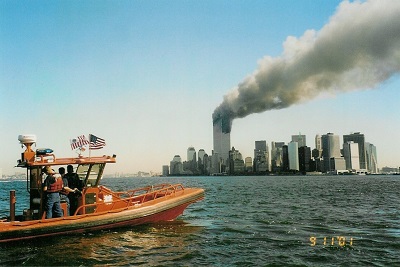
9/11 and Beyond
Coast Guard units from Activities New York were among the first military units to respond provide security and render assistance with the attacks of September 11, 2001. In answer to the terrorist threat and to protect our nation’s coastline, ports and waterways, six U.S. Navy Cyclone-class patrol coastal warships were assigned to Operation Noble Eagle on November 5, 2001. This was the first time that U.S. Navy ships were employed jointly under Coast Guard command.
In the aftermath of the attacks, President George W. Bush proposed the creation of a new Cabinet-level agency, eventually named the Department of Homeland Security. The Coast Guard was foremost among the agencies that constituted the new department. On November 25, 2002, President Bush signed HR 5005, creating the Department of Homeland Security, and the Coast Guard officially transferred to the newly created department on February 25, 2003.
As a prominent member of the new department, Coast Guard units deployed to Southwest Asia in support of the U.S.-led coalition engaged in Operation Iraqi Freedom early in 2003. At the height of operations, there were 1,250 Coast Guard personnel deployed, including about 500 reservists. This included two large cutters, one buoy tender, eight patrol boats, four port security units, law enforcement detachments and support staff to the Central and European Command theaters of operation.
To do this day, Coast Guard units remained deployed throughout the world and conduct joint operations in support of the most critical needs of combatant commanders for a variety of national defense missions. Throughout the service’s 225-year history, it has always remained Semper Paratus to support the defense of our nation and will continue to do so for generations to come.
The opinions expressed herein are the author's and not necessarily those of The Maritime Executive.
